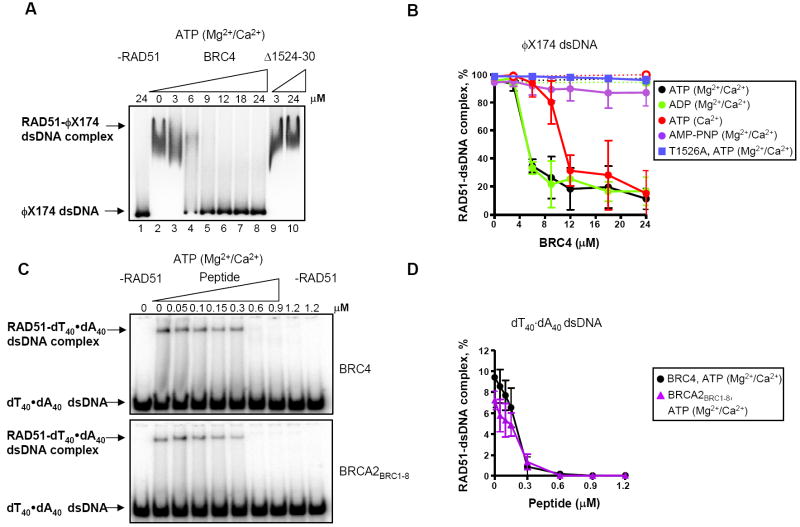Figure 3. BRC4 and BRCA2BRC1-8 block RAD51-dsDNA complex formation.
(A) Autoradiograph of an agarose gel showing RAD51 (3 μM) incubated with either GST-BRC4 or GST-Δ1524-30 prior to incubation with 32P-labeled ϕX174 linear dsDNA (5 μM, nt) and further incubation for 1 h in the presence of ATP, Mg2+ and Ca2+. (B) Quantification of data as in (A): in the presence of ATP, Mg2+ + Ca2+ (●); ADP, Mg2+ + Ca2+ ( ); ATP and Ca2+ (
); ATP and Ca2+ ( ); or AMP-PNP, Mg2+ + Ca2+ (
); or AMP-PNP, Mg2+ + Ca2+ ( ). Filled circles and solid lines correspond to GST-BRC4; open circles and dashed lines correspond to GST-Δ1524-30. Data obtained with the control mutant, GST-T1526A, in the presence of ATP, Mg2+ + Ca2+ :(
). Filled circles and solid lines correspond to GST-BRC4; open circles and dashed lines correspond to GST-Δ1524-30. Data obtained with the control mutant, GST-T1526A, in the presence of ATP, Mg2+ + Ca2+ :( ). (C) The effect of BRC4 or BRCA2BRC1-8 on RAD51-dsDNA complex formation using dA40·dT40 dsDNA. RAD51 (0.15 μM) was incubated with GST-BRC4 or BRCA2BRC1-8, at the concentrations indicated prior to incubation with 32P-labeled dA40·dT40 dsDNA (2.4 μM, nt) and further incubation for 1 h in the presence of ATP, Mg2+ and Ca2+. Protein-DNA complexes were resolved in 6% PAGE and analyzed by autoradiography. (D) Data obtained as in (C), quantified and plotted: GST-BRC4, (●); BRCA2BRC1-8 (
). (C) The effect of BRC4 or BRCA2BRC1-8 on RAD51-dsDNA complex formation using dA40·dT40 dsDNA. RAD51 (0.15 μM) was incubated with GST-BRC4 or BRCA2BRC1-8, at the concentrations indicated prior to incubation with 32P-labeled dA40·dT40 dsDNA (2.4 μM, nt) and further incubation for 1 h in the presence of ATP, Mg2+ and Ca2+. Protein-DNA complexes were resolved in 6% PAGE and analyzed by autoradiography. (D) Data obtained as in (C), quantified and plotted: GST-BRC4, (●); BRCA2BRC1-8 ( ).
).

